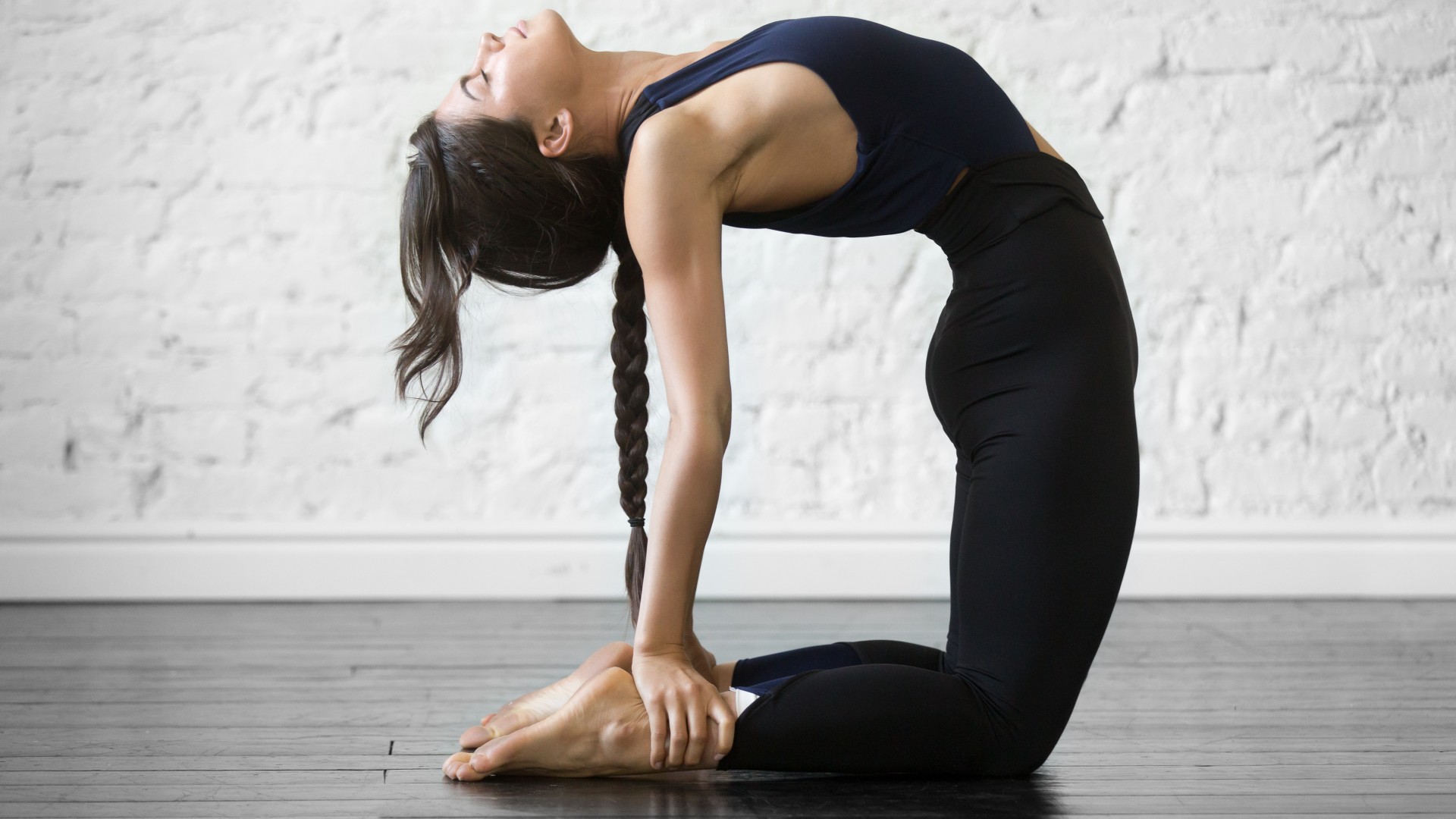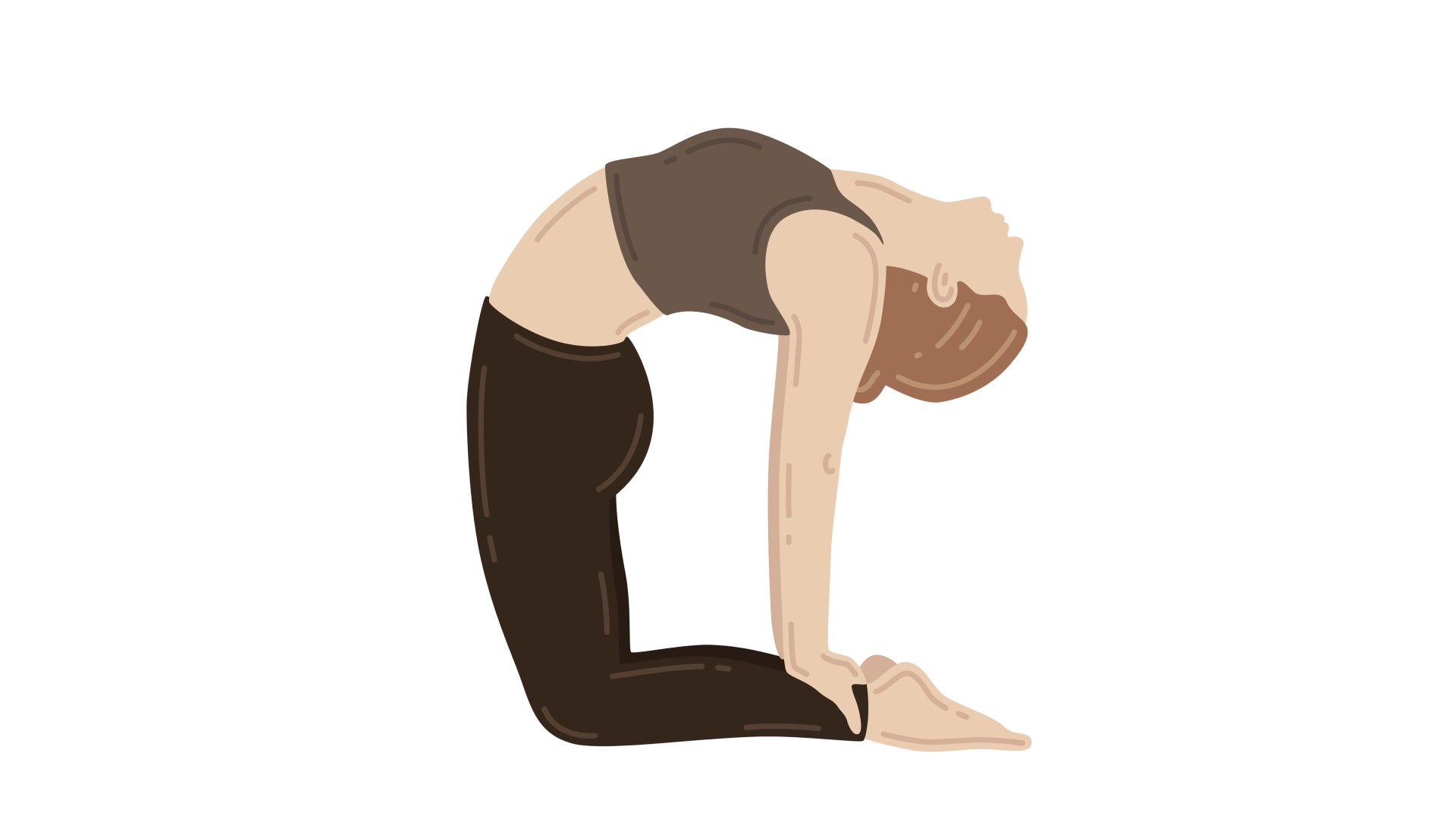
I’ve been held in camel pose during yoga classes and wouldn’t classify it as fun, so why did I decide to do camel pose every day for one week? I’m still unsure, but here we are, and here’s what I learned from it.
Now that we've hit the new year, I’ve been getting more creative with my exercise routine to revamp stale routines and get my body moving again with vigor. With a little adjustment, I’ve been adding mobility to my mornings in a bid to counteract the negative effects of prolonged sitting. Which, by the way, I’ve been partial to while celebrating the holidays. How else do you fit in all those Christmas classics?
So, it’s all systems go on another year and back to my regular CrossFit schedule. Here’s what went down when I gave my torso, including my back and hips, some good ol’ TLC with the camel pose — a yoga classic all year round.
How to do camel pose

I want to be clear that camel pose comes with contraindications, particularly for those with lower back pain and symptoms of sciatica. The yoga posture isn’t for everyone, and you should seek the advice of a physician or yoga instructor if you plan to try it and you’re recovering from injury, are pregnant, or post-partum.
My yoga instructor also warns me that those with blood pressure issues (high or low) might want to skip this one, too. I get a little lightheaded during the exercise, but more on that shortly.
Ready to give it a shot? Here’s how:
- Start on your knees and place them hip-width apart with the tops of the feet resting on one of the best yoga mats.
- Engage your stomach muscles and slightly tuck your tailbone toward the ground.
- Squeeze your inner thighs and quads, lengthen the spine and draw both shoulders back and down.
- Place your fingertips at the base of the spine just above your glutes and rest your palms against the lower back.
- As you inhale, sit taller through your torso and lift your chest, then as you exhale, start to move into a backbend while relaxing your neck and allowing your gaze to follow.
- Hold and breathe. If you feel comfortable to continue, lower your hands to take hold of your heels and pull your shoulders back while gently pressing your hips forward and lifting the chest on the exhale.
- Hold and breathe.
- On an inhale, slowly come back up, release your heels and take a moment to adjust, then sit on your heels for a few breaths.
You could stay with your hands supporting your lower back or circle one arm up and over (at a time) to rest on your heel rather than moving with both arms.
Sign up to get the BEST of Tom's Guide direct to your inbox.
Get instant access to breaking news, the hottest reviews, great deals and helpful tips.
I did the Camel Pose exercise every day for a week — here are my results
It made me lightheaded
Camel pose, also known as Ustrasana, is a deep backbend posture found in yoga. There are ways to adapt the pose, which I did take, but like any backbends, some people can get dizzy or nauseous. I tried to dig into the research, but surprisingly, I couldn’t find much conclusive evidence on the topic.
From what I could find, as with any inversions or bends, dizziness could be down to a change in blood pressure and your body’s perception of where it is in space. Moving too quickly or not breathing properly are two potential causes, as well as medical conditions such as low blood pressure. According to the Dallas Ear Institute, another includes a shift in balance that could interrupt the inner ear canals.
I slowed down my entrance and exit to the pose and focused on breathing toward my belly, taking a short rest in child's pose after.
I had to focus on my breath
Diaphragmatic breathing can help relieve discomfort and aid relaxation, reducing feelings of anxiety. Abdominal breathing is a focal part of yoga and integral for asanas (yoga poses) in sequence. In this case, it helped me to soften into the backbend and stay there for long enough to feel the benefits of the camel pose.
According to the University of Michigan Health, belly breathing helps lower the heart rate, decrease muscle tension and increase blood oxygenation, reducing feelings of stress.
My back felt incredible
It’s a challenging posture and, as mentioned, not for everyone. But for me, accumulating time in camel pose delivered a deep lower back, abdominal and hip flexor stretch, helping me to mobilize my spine, open my upper body and counteract the slumped feeling that comes from spending long hours at my desk.
I felt energized and taller afterward, and I noticed a huge difference in my upper body immediately after and throughout the week. That said, there’s no magical quick fix for postural problems, and you’d need to set a regular mobility routine in place for your upper body if you have tight chest, shoulder, or back muscles.
Camel pose isn’t a backbend you start with; rather you work toward it. I included several stretches beforehand to warm my muscles properly using preparatory poses for camel. Moving too quickly could increase your risk of injury, so if you’re unsure how to prep for camel pose, consider saving it for a guided yoga class.
Verdict
My yoga instructors tell me that camel not only delivers a deliciously deep stretch for the upper body but could help build a strong and flexible back, help counteract tight back and hip muscles, improve posture, relieve lower back pain and stretch the front of the body.
How did I feel after a week of practicing camel pose? Amazing. And my upper body felt better prepared for exercise. Sometimes, I started the day with camel, which helped me feel more energized, but doing the pose after a day’s work felt even more beneficial.
If you plan to try the pose and don’t have any contraindications to it, you could try tucking your toes to make camel more easily reachable while also stretching your feet, or use blocks next to your feet on a tall setting — this $10 accessory could help anyone level up their yoga practice. If you want more from your investment, it works for other workouts like this yoga block ab routine too. Looking for something else entirely? We've included some options below.
More from Tom's Guide

Sam Hopes is a level 3 qualified trainer, level 2 reiki practitioner and senior fitness writer at Tom's Guide. She is also currently undertaking her Yoga For Athletes training course. Sam has written for various fitness brands and websites over the years and has experience across brands at Future such as Live Science, Fit&Well, Coach, and T3.
Having worked with fitness studios like F45 and Virgin Active, Sam now primarily teaches outdoor bootcamps, bodyweight, calisthenics and kettlebells. She also coaches mobility and stretching-focused classes several times a week and believes that true strength comes from a holistic approach to training your body.
Sam has completed two mixed doubles Hyrox competitions in London and the Netherlands and finished her first doubles attempt in 1:11.
